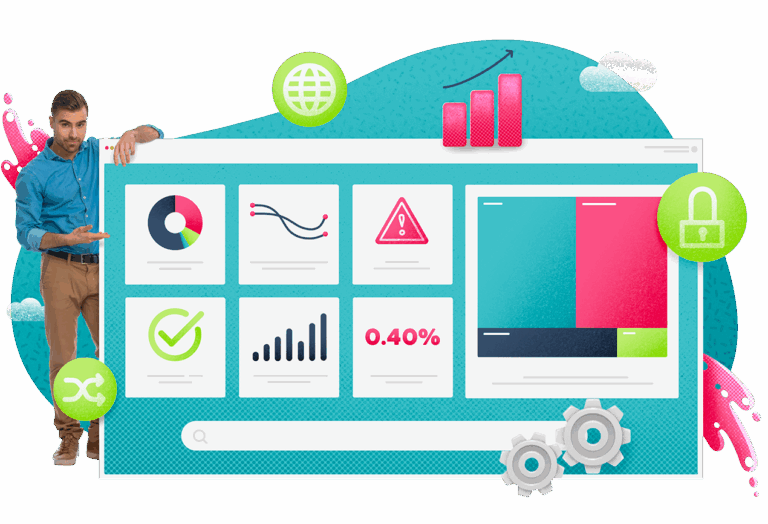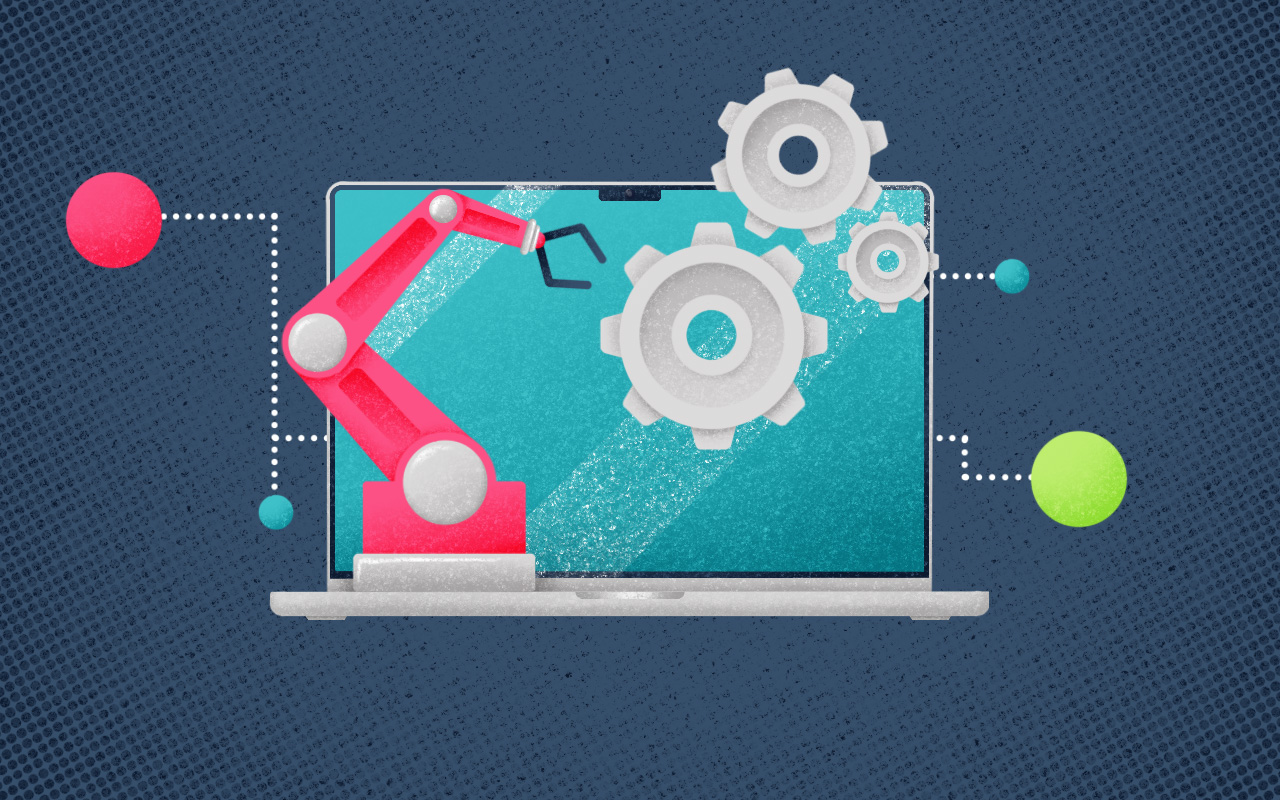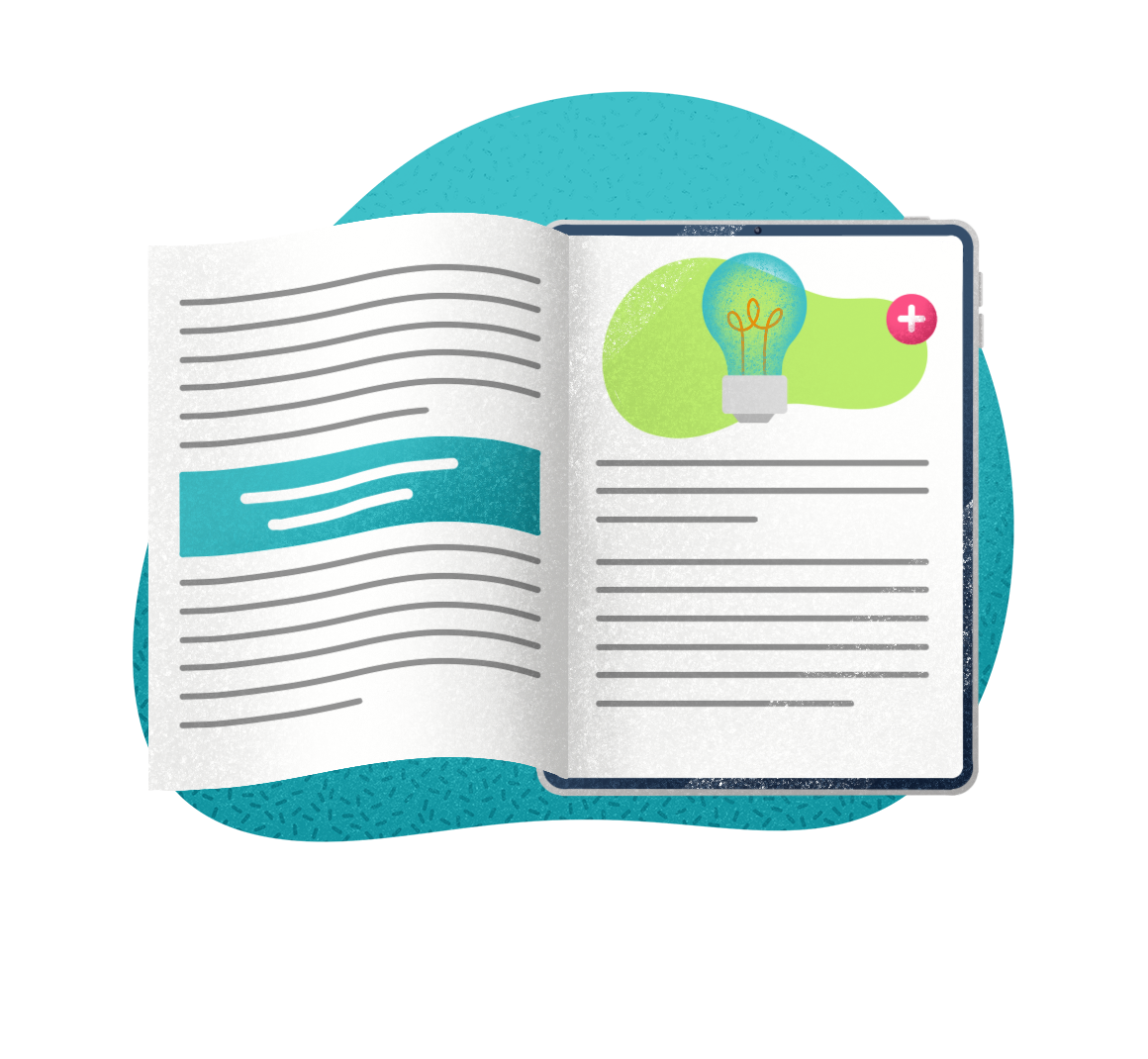1. Introduction to IT Workflow Automation
What is IT Workflow Automation?
More efficiency, more optimization, more reliability: IT workflow automation is at the center of the scene for these simple and crucial reasons… which, in turn, reflect the demands of the market and of every company.
In a context that we could define as one of “permanent digital transformation,” leveraging automation means reducing costs, increasing productivity, and enabling IT departments to focus on more strategic areas. It’s not just a matter of speed and savings; it’s a fundamental tool for improving IT performance and ensuring that business processes are always aligned with the growing expectations of the market.
But what exactly are we talking about, more concretely?
In short: IT workflow automation consists of automating repetitive manual tasks and processes using increasingly advanced and “intelligent” technological tools. Activities that used to require direct intervention from dedicated teams—such as ticket management or resource allocation—are now simplified and managed automatically, with error margins that grow smaller every day.
The Role of AI in Optimizing IT Workflows
Automation and artificial intelligence are naturally closely linked. We can say that AI adds an additional level of sophistication to IT workflow automation, allowing systems to “learn from experience” based on the input and data collected, and to make decisions autonomously.
Thanks to AI, companies can not only automate processes but also predict and resolve problems in advance, further improving efficiency and reducing downtime.
In short, there’s a vast field in front of us to explore, with the right attention, but also by moving ahead of the competition to gain a competitive advantage.
2. Key Areas for IT Automation
Automation of Service Desk Operations
Automation can be applied to different areas of the IT department, each of which can benefit significantly from the reduction of manual workloads and the optimization of processes.
One of the most important areas is certainly the service desk, which is often the first point of contact for users needing IT support.
Automating operations such as ticket creation, prioritization, and handling of repetitive requests brings very tangible benefits and is something that can be achieved with great ease by relying on specialized solutions like those from EasyVista Service Manager.
Incident and Problem Management Enhanced by AI
Here’s another key area. Automation and AI systems can transform incident and problem management, identifying causes precisely and suggesting solutions in a timely manner.
But the approach is no longer just reactive. With the use of machine learning algorithms, it is possible to predict the occurrence of incidents, reducing response times, mitigating the negative impacts on business operations, and embracing a more effective proactive approach.
Automation of Workflows in IT Asset Management
The IT assets of a company—large, small, or medium—multiply, need constant updating, must be secured, and need to function like a well-coordinated orchestra. To achieve this, once again, automation comes to our aid.
Automating asset management processes, such as inventory, software updates, disposal of obsolete devices (and much more), is essential. It’s a matter of efficiency, security, but also compliance.
3. How AI Improves IT Workflows
AI for Predictive Maintenance and Monitoring
The IT infrastructures of companies are becoming increasingly extensive and “elastic.” Therefore, they need to be constantly and in real-time monitored, identifying potential anomalies before they turn into serious problems. This predictive maintenance approach is one of the very tangible advances that AI systems have already brought.
The benefits? Downtime is minimized, resource utilization is optimized, and the costs associated with extraordinary repair interventions can be avoided.
Smart Ticket Routing and Prioritization
Smart routing is a key element of ticket management. It’s the process that allows requests or tickets to be automatically routed within the service desk to the most appropriate team or technician, based on predefined criteria such as the type of request, priority, staff availability, or required skill level.
Once again, the benefits are many, including the optimization of response times and workloads, the reduction of manual errors, and, once more, an overall improvement in efficiency.
AI-Based Self-Service Solutions
Another crucial strategy to optimize request management and avoid overloads is to implement self-service solutions.
Integrating AI-powered chatbots and virtual assistants into self-service portals allows users to solve common problems without IT staff intervention.
This not only reduces the workload of the service desk but also improves the end-user experience, providing quick and accurate responses to their requests. The dynamic, in short, is perfectly win-win.
4. Implementing AI and Automation in IT Workflows
Steps to Automate IT Workflows
Automating IT workflows brings a significant chain of benefits. However, it requires a coherent and efficient implementation strategy.
There’s no one-size-fits-all recipe; much depends on the structure of the individual company and the context in which it operates. But there are some key steps to consider in any case:
- Set clear objectives for this transition;
- Identify the areas with the greatest potential for automation;
- Choose the right tools (a point we’ll return to in the next paragraph);
- Integrate new solutions with existing systems;
- Continuously monitor results to make improvements;
- Pay close attention to staff training.
Tools for Workflow Automation and AI Integration
The tools that facilitate IT workflow automation and AI integration are diverse and continuously growing; among them, IT Service Management (ITSM) platforms, business process management (BPM) software, and AI-focused solutions for monitoring and analysis play a central role.
Automation is at the heart of all EasyVista solutions and products, designed for companies of any size, with a strong emphasis on ease of implementation and use.
Overcoming the Challenges of AI and Automation Implementation
There’s no doubt: implementing automation and AI systems offers great advantages and enormous opportunities, still largely to be explored. But every innovation brings challenges that must be addressed.
In this case, the challenges involve change management, data security, and integration with existing systems. Therefore, it is essential to plan an adoption strategy for advanced systems that includes careful employee training, adjustments to company policies, and the implementation of advanced and constantly updated security measures.
5. The Benefits of AI and Automation in IT Workflows
As we near the conclusion, let’s summarize the main benefits of AI and automation in IT workflows that we have already touched upon in the previous sections of this article.
Greater Efficiency and Productivity
Automating IT processes reduces execution times, minimizes errors, and allows teams to focus on higher value-added activities. In other words: it greatly improves efficiency and productivity.
Improved Employee and Customer Satisfaction
Greater efficiency also means greater employee satisfaction, as they are not overwhelmed by sudden workloads, often involving boring and repetitive tasks. All this positive impact, finally, is reflected on end customers. And we know how crucial this is in today’s business world.
Reduction of Operating Costs
Not only greater efficiency. Optimizing IT workflows also leads to a significant reduction in costs, thanks to reduced downtime, optimized resource use, and fewer manual activities.
6. Conclusion
The Future of IT Workflow Automation
The future of IT workflow automation is closely linked to the development of new AI-based technologies and integration with increasingly advanced IT management tools. In front of us, we have vast opportunities, and—as always—the most attractive opportunities will be seized by those who know how to move ahead.
AI and Automation as Strategic Resources in IT Management
Let’s conclude with one certainty: we must think of AI and automation systems not just as technological tools, but as true strategic resources for IT management, capable of transforming operational efficiency and even the “mindset” of a company.
The end result? The creation of a lasting competitive advantage.
FAQ
What are the main benefits of IT workflow automation?
Improved operational efficiency, increased productivity and security, reduced costs, minimized errors, and enhanced employee and customer satisfaction.
What tools are recommended for IT workflow automation?
IT Service Management (ITSM) platforms, like EasyVista, offer complete solutions for process automation and continuous monitoring of IT operations. Other useful tools include business process management (BPM) software and AI technologies for anomaly detection.
Can IT workflow automation be implemented in any company?
Yes, automation can be implemented in companies of any industry and size. However, it’s important to assess the specific needs of each company and choose the solutions that best suit their processes and objectives.
Infographic – The status of SMB IT in 2026
Explore how AI, automation & integrated ITSM/ITAM are reshaping IT strategy—at every scale.


